MASt – Spring Seminar 2022 (Friday, April 8): Summaries of Presentations and Discussion
§1. Rachele Pierini opened the Spring session of the MASt seminars by welcoming the participants to the April meeting. In addition to the regular members of the MASt network as well as colleagues and students who have already attended previous sessions, two new guests joined the April 8 meeting: Artemis Karnava and Diana Wolf.
§2. The talks of the Spring 2022 meeting were Not only Zakros Master? Defining a local branch in the sealing administration of Neopalatial Kato Zakros by Maria Anastasiadou, and (Re)configuring Linear A & Digital Configurations by Ester Salgarella.
§3.1. Anastasiadou’s premises are that more than 550 impressed nodules have been recovered in Neopalatial Kato Zakros, and the nodules have been stamped by two main seal categories: (i) the seals that do not differ in significant manners from those known from mainstream Minoan glyptic; and (ii) those commonly attributed to the so-called Zakros Master, which are almost exclusively attested by their use at the site. Considerations about the sealing practices and nodule morphology allow discerning two manifestations of the Neopalatial sealing administration in Kato Zakros, one mainly connected with mainstream Minoan and another mostly associated with the Zakros Master seals.
§3.2. Building on this, Anastasiadou presented the methodology used to distinguish between the two manifestations of sealing administration at the Neopalatial site. Moreover, she argued that the one that is associated with Mainstream Minoan seals cannot be overtly related to Kato Zakros, however the one connected with Zakros Master seals could represent a local administrative branch.
§3.3. Finally, Anastasiadou pointed out that several nodules that seem to belong to the latter branch are particularly interesting, because they are stamped with Mainstream Minoan Seals. Hence, she discussed the role that these pieces play in gaining a better understanding of the social developments at the Neopalatial site.
§4.1. Salgarella addressed the thought-provoking questions “What if we started to question the unquestionable?” By questioning a number of criteria that have traditionally been used to systematize Linear A so as to make it (to an extent) intelligible to us, Salgarella’s talk addressed two points. First, she proposed to re-evaluate some of the basic assumptions that have so far underpinned our interpretation of Linear A. Second, she offered an alternative way of looking at the Linear A script from a more nuanced perspective.
§4.2. Salgarella followed a two-fold approach. First, she investigated Linear A at a structural level, to flag the pitfalls of the current sign classification and pinpoint alternative taxonomic models. Second, she carried out a comprehensive palaeographic investigation of Linear A administrative documents, taken as a case study, to disentangle some of this script’s graphic complexities, which she then compared with evidence from its offshoot (i.e. Linear B).
§4.3. The integrated results of this investigation provide evidence to rethink the way in which we look at Linear A and wonder whether our longstanding way is still productive. Finally, Salgarella showed how digital approaches play a key role in taking this research a step further, allowing us to re-systematize the evidence at our disposal by setting different and customizable parameters. As a concluding remark, she highlighted that in the digital era Linear A research will hopefully benefit soon also from the application of computational techniques to its kaleidoscopic dataset.
§5. Substantial discussions followed each presentation. Specifically, contributions to the seminar were made by Maria Anastasiadou (see below at §§34.2; 35.2; 35.4; 36.2; 37.2; 38.2; 38.4; 39.2; 39.4; 59.1), Janice Crowley (§36.1), Georgia Flouda (§37.1), Artemis Karnava (§34.1), Gregory Nagy (§63.1), Tom Palaima (§§39.1; 58.1; 61.1; 63.3), Ester Salgarella (§§57.2; 58.2; 59.2; 60.2; 61.2; 62.2; 63.2), Brent Vine (§60.1), Judith Weingarten (§§35.1; 35.3; 39.3; 39.5; 57.1; 62.1), Diana Wolf (§§38.1; 38.3).
Topic 1: Not only Zakros Master? Defining a local branch in the sealing administration of Neopalatial Kato Zakros
Presenter: Maria Anastasiadou
§6. In this paper, I will suggest that Neopalatial sealing administration in Kato Zakros is manifested in two manners, one of which is connected with the so-called Zakros Master Seals and can probably be associated with a local element.[1] I will present the methodology that has led me to this conclusion and will discuss a group of nodules that are not stamped by Zakros Master Seals but which I, still, see as representative of the local administrative branch.
Impressed nodules in Kato Zakros
§7. Minoan Kato Zakros extends over a small coastal valley and its surrounding hills at the far eastern end of Crete.[2] Despite the remoteness of the area, the site grew into a flourishing town during the Neopalatial (LM I) period, at the centre of which a court-centred building (palace) was constructed later in this phase (late LM IA).[3] The site must have grown in importance due to the strategic position that allowed it to develop into a major Neopalatial harbour for overseas trade with the east and the south.[4] The town and palace were abandoned after fire destruction at the end of the Neopalatial period (LM IB).[5]
§8. Five hundred and fifty-five impressed nodules are known from the Neopalatial site today (Figure 1).[6] All, except five, were recovered in D. G. Hogarth’s 1901 excavations of House A.[7] House A was an architecturally ordinary building situated high on the western slopes of the hill to the north of the palace, and the westernmost excavated of the Zakros town buildings.[8] The impressed nodules were found together with a fragmentary Linear A tablet and several bronze tools in a small circular area about 45 cm from the floor in Room VII.[9] A stone lamp or altar, two “hole-mouth” strainers and fragments of approximately ten more painted pots were also found in the room. The excavator suggested that the nodules had fallen from above after the ceiling had collapsed.
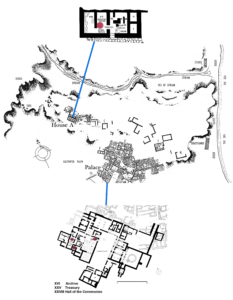
Figure 1. Minoan Kato Zakros with the find-spots of the nodules marked in red: middle, excerpt of the general plan of the site; up, House A; down, the palace (after CMS II,7:XVI—XVII figures 2—3 [images courtesy of the CMS Heidelberg]; Hogarth 1900/1901:131 figure B).
§9. Five nodules were found in N. Platon’s excavations of the Palace in the 1960s.[10] They were recovered in three rooms of the West Wing: the Treasury, the Archive and the Hall of the Ceremonies. [11] In two rooms, the nodules were found together with 16 Linear A tablets and bronze hinges of boxes which, according to the excavator, had stored the tablets.[12] Nikolaos Platon hypothesized that more non-preserved nodules and tablets may have been kept there, based on the brick-colored soil excavated in the Archive.[13]
§10. In both House A and the Palace, the nodules had been exposed to fire and were found in the final, LM IB, destruction layer.[14]
The impressed nodules
§11. Five types of nodules are encountered in Kato Zakros: flat-based nodules, two-hole hanging nodules, noduli, one-hole hanging nodules and a roundel.[15] The preponderance of flat-based nodules, comprising 486 specimens, is striking. Flat-based nodules preserve the imprints of objects they secure on their base, the so-called packets. These, not preserved today, were small sheets of leather or soft parchment folded and often tied with a string.[16] Most scholars consider them script carriers.[17] The domination of one nodule type at the site must be connected with the intensive practice of a specific type of administration. Flat-based nodules, or at least many of them, may have been somehow associated with trade activities.[18]
The seals used to stamp the nodules
§12. The seals stamped on the nodules can be divided into two main “categories” (Figure 2). One consists of seals that belong to different seal classes but are here grouped together because they represent well-known Minoan stylistic groups of seals that display the conventional Minoan imagery (Mainstream Minoan Seals).[19] These are, e.g., gold signet rings, soft stone lentoids of the so-called Cretan Popular Group and talismanic seals. Two of the so-called replica rings, i.e., a group of elaborate Neopalatial gold signet rings, whose impressions have been found in more than one site, are also attested.[20]

Figure 2. Mainstream Minoan Seals, Kato Zakros impressed nodules (II,7: CMS II,7. Drawings courtesy of the CMS Heidelberg).
§13. The second seal “category” involves the seals of the so-called Zakros Master, mostly acknowledged by their impressions in Kato Zakros (Zakros Master Seals) (Figure 3).[21] They should be seen as a distinct seal class because their imagery and style are unparalleled, both in Neopalatial glyptic and, generally, in Aegean art. These seals had round seal faces and were probably manufactured in soft materials. They could have been lentoids, but reels or some other shape specific to Zakros type seals cannot be ruled out.[22] Their intaglios display typical full-bodied motifs that occupy a large part of the seal face. A preference for frontal and bilaterally symmetrical images is evident.

Figure 3. Zakros Master Seals, Kato Zakros impressed nodules (II,7: CMS II,7. Drawings courtesy of the CMS Heidelberg).
§14. The most outstanding trait of these seals is the composite motifs on their seal faces.[23] Two factors bring these images together to a clear iconographic group: a specific image repertoire that is used for their parts; and the consistent employment of specific practices in the ways these are combined into a unit (Figure 3: II,7 117, 198; Figure 4). The image repertoire comprises, e.g., parts, or rarer, full depictions of humans, butterflies, lions, birds, Minoan Dragons; helmets and double axes; rosettes and lilies; wavy lines and J-spirals. The combination practices involve: a) fragmentation (i.e. using parts of physical or ornamental entities as opposed to whole units); b) mixing (i.e. combining elements of different entities to form new ‘mixed’ units); c) alternation (i.e. consistently alternating elements to build the composite motifs); d) differentiation (i.e. creating composites with a distinct form differing from other composites). As a result of the latter practice, none of the compound motifs of this group is encountered more than once in Minoan imagery.[24] Hence, they are viewed as occasional conglomerates of different parts and not as entities that had a standard form and specific character in Neopalatial cognition, as the griffin and the sphinx.

Figure 4. Zakros Master Seals with images of compound motifs: practices of fragmentation, mixing and alternation (II,7: CMS II,7; drawings courtesy of the CMS Heidelberg).
§15. Some seal faces without composite motifs can also be added to the group on stylistic grounds (Figure 3: II,7 218). These depict quadrupeds or their parts, a sphinx, objects, constructions and floral as well as ornamental elements.
Variants
§16. The use of seal faces carrying the same images in twin versions or triplets is notable (Figure 5). These seal faces were purposefully made alike to substitute for each other in the sealing process.[25] This is evident in their similar images and, also, the consistent use of seal faces with variants in stable combinations with each other in several nodules. Apparently, each set of seal faces with variants could have been used by different actors equally authorized to seal with the same seals.

Figure 5. Seal faces with variants on the impressed nodules from Kato Zakros (II,7: CMS II,7. Drawings courtesy of the CMS Heidelberg).
§17. There are 18 cases of twin and 12 instances of triplet seal faces in Kato Zakros. Except for two sets of twins, which are Mainstream Minoan Seals (see §30—32), the remaining sets constitute Zakros Master Seals with compound motifs.
The sealing practices
§18. There are one-, two- and three-seal nodules (Figure 6). One-seal nodules are only stamped by one seal face, either one or many times. Multi-seal nodules are impressed by more than one different seal face.
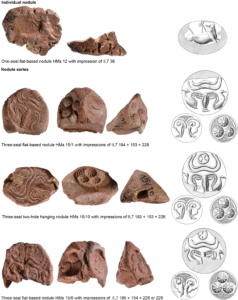
Figure 6. Sealing practices on the impressed nodules from Kato Zakros: one- and multi-seal nodules; individual nodules and nodules in series; seal faces with variants in one series (II,7: CMS II,7. Drawings courtesy of the CMS Heidelberg. Photographs: Maria Anastasiadou, © Archaeological Museum of Heraklion, Hellenic Ministry of Culture and Sports—Hellenic Organisation of Cultural Resources).
§19. There are individual nodules and series of nodules. Individual are called the nodules whose impressions or combination of impressions are only encountered once in Kato Zakros. Series are groups of nodules stamped by the same seal face or seal face combination. Different variants of the same image are counted as representatives of the same seal face. This means that one series often includes nodules with the same image(s) but stamped by different seal faces. A series may comprise similar or also different nodule types, e.g., flat-based nodules and two-hole hanging nodules.
§20. There are seal faces that are only combined with each other in multi-seal nodules, i.e., they act as stable pairs or trios (Figure 7). Other seal faces behave variably in different nodules. One may, e.g., stamp alone on a one-seal nodule but can also be combined with another seal face on a two-seal nodule. It is also possible that one seal face is combined with different seal faces in different nodules.
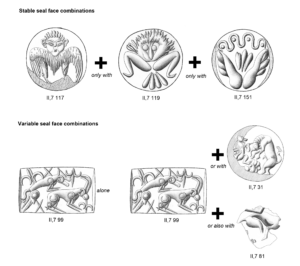
Figure 7. Sealing practices on the impressed nodules from Kato Zakros: stable and variable seal face combinations (II,7: CMS II,7. Drawings courtesy of the CMS Heidelberg).
Two manifestations of Neopalatial sealing administration in Kato Zakros?
§21. Seal faces that belong to two different seal “categories” are rarely combined in one nodule. Usually, Mainstream Minoan Seals are attested alone or combined with each other and Zakros Master Seals are combined between themselves (Figure 7: up, Zakros Master Seals; down, Mainstream Minoan Seals).
§22. A total of 211 impressed nodules, all one- and two-seal nodules, are exclusively stamped by Mainstream Minoan Seals.[26] Only 35 of these nodules are associated with variants. Nodules in series are common but there are also several individual specimens.[27] Most series are built by fewer than 10 nodules each; there are two exceptions, one of which will be discussed further down.[28] In two-seal nodules, instability in the seal face combinations is common.[29] The ‘packets’ associated with these nodules display large variability. There is, however, a tendency for those tied with a few or a medium number of string strands to predominate over the ones tied with many strands.
§23. The nodules exclusively stamped by Zakros Master Seals count 286 specimens. Multi-seal nodules, i.e., three- and two-seal specimens, predominate.[30] Only four one-seal specimens are attested. Variants are frequent, encountered in 249 nodules. Nodules that belong to series prevail with 271 examples, whereas there are only 14 individual specimens. Series built by more than 10 nodules are common.[31] In multi-seal nodules, stability in the seal face combinations prevails, encountered in 206 nodules. Here too, there is a large variability in the morphology of the “packets”. However, “packets” tied with many turns of the string in a “continuous” manner are here most common. Some “packets” only tied very sparsely with a string stand out because of the characteristically small quantity of string used.
§24. In summarizing, one-seal nodules, individual specimens and variable seal combinations are mainly associated with Mainstream Minoan Seals. On the other hand, three-seal nodules, variants, series integrating more than 10 specimens, stable seal combinations and “packets” tied with many strands turned in a “continuous” manner are more intensively connected with Zakros Master Seals. These differences are, nonetheless, not always absolute. They should, however, be meaningful, given the distinctive imagery of Zakros Master Seals, which must reflect some common belonging of a particular social element.[32] Accordingly, the sphragistic behavior of these seals could be seen as indicative of administrative dealings specific to the needs of a distinct, well-defined social group.
A local administrative branch?
§26. It is not possible to connect or disconnect nodules stamped by Mainstream Minoan Seals with a local, Kato Zakros administration. The mainstream character of these seals does not allow their straightforward connection with a specific region as the place of their production. Knossos manufacture tentatively suggested for the so-called replica rings is possible but cannot be proved based on hard data.[33] More to this, the sealing practices on the nodules stamped by these seals in Kato Zakros do not differ from those attested on nodules from other Neopalatial sites: one- and two-seal nodules are also encountered in Neopalatial Akrotiri, Knossos, Agia Triada, Chania, Sklavokambos, Gournia and Malia.[34] Nodules in series and as individual specimens are also found on these deposits.[35] Variable seal face combinations in two-seal nodules are common in Akrotiri, Thera but also encountered elsewhere, e.g., Agia Triada, Sklavokambos and Chania.[36]
§27. In contrast to the above, a connection with a local administration seems plausible for the nodules stamped by Zakros Master Seals. These seals display a unique style unparalleled in mainstream Minoan glyptic. They must have been manufactured in one workshop and, therefore, in one region, possibly Kato Zakros, since large numbers of impressions of this type of seals were recovered there. Such seal impressions are also known outside Kato Zakros, e.g., Agia Triada and Knossos, but only attested by six or seven specimens.[37] Significant may also be that, despite their original and impressive character, composites of the Zakros type did not create an iconographic tradition in Minoan Crete after the end of LM IB.[38] This could be explained if this seal type and its images constituted a strictly local phenomenon serving local needs and did not, because of this, expand further than the boundaries of Neopalatial Kato Zakros. It would also explain why these emblematic objects seized to exist after the site was destroyed and abandoned.
§28. If Zakros Master Seals were manufactured in Kato Zakros, the nodules stamped by them must have been produced in the framework of local administration. A local character for these nodules may also be supported by certain sealing practices that appear to have a particular connection with them: (i) the use of three-seal flat-based nodules that are popular with these seals but are not encountered on other Neopalatial sealing deposits, with a sole exception from Knossos;[39] (ii) the scarcity of one-seal nodules, which are otherwise commonly attested in all other known Neopalatial sealing deposits.[40] The use of variants and stable seal face combinations is also notable. This is not exclusive of Kato Zakros as it is also met elsewhere, most notably in Knossos and Agia Triada.[41] However, the intensity with which these two practices are employed in Zakros Master Seals is unparalleled. Obviously, the particularities in the sealing practices connected with Zakros Master Seals suggest that they served specific administrative needs. Since the practices are intensively attested in Kato Zakros, these needs may as well have been local.
§29. A connection of the nodules in question with local administration would allow for two possibilities as regards their place of manufacture: they could have been produced in the town or its hinterland; or outside the Zakros region but under the ruling of the town’s sealing administration.
Some “hybrid” nodules of the local administrative branch?
§30. A series of 35 nodules are stamped by two mainstream Minoan signet rings, one with a bull-leaping scene and the other with a procession of two humans (Figure 8). However, some of the sealing practices on these nodules bring them closer to nodules stamped by Zakros Master Seals than those impressed by Mainstream Minoan Seals.
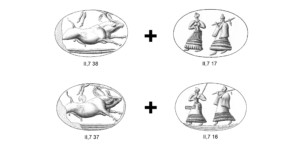
Figure 8. Seal faces of gold (?) signet rings stamped on a series of 35 impressed nodules from Kato Zakros which display sealing practices that appear local (II,7: CMS II,7. Drawings courtesy of the CMS Heidelberg).
§31. First, the large number of specimens in the series is comparable with the high numbers of nodules in series stamped by Zakros Master Seals. Then, there is the use of variants, which are common in Zakros Master Seals: both rings are attested in two versions. Furthermore, several “packets” of flat-based nodules take forms common in nodules stamped with Zakros Master Seals (Figure 9). Moreover, in series of nodules involving Zakros Master Seals and variants, there are nodules that are stamped by one set of variants and secure “packets” tied with many strands and those stamped by another set of variants that secure “packets” tied with very few strands. A similar situation is also noted in the series in question: the nodules stamped by one set of variants are commonly associated with “packets” tied many times and those impressed by the other set are, in most cases, only tied a few times.
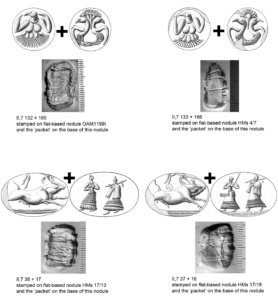
Figure 9. Seal faces and “packets” in a series of nodules stamped by Zakros Master Seals (up) and the series of 35 nodules displaying sealing practices that appear local (down): in both series, one set of variants is associated with “packets” that display many turns of the string and the other with those only would with a few strands (II,7: CMS II,7. Photographs: Maria Anastasiadou; drawings and photographs courtesy of the CMS Heidelberg).
§32. Despite their association with Mainstream Minoan Seals, the nodules in question possibly belong to the local branch of sealing administration. Of relevance, here, might be Hallager’s hypothesis that the bull-leaping rings used on these nodules are so-called local replica rings, i.e., rings used as a substitute of the “replica rings” but manufactured in Kato Zakros.[42] Hallager grounded his assumption on the suggestion that the engraving style of the rings differs from that of the “replica” rings proper and the proposal that the clay of the relevant nodules was, probably, local. Both suggestions are hypothetical. A different engraving style does not necessarily speak of local manufacture. Moreover, macroscopic observation does not necessarily suffice for establishing the provenance of the clays used for the manufacture of the Kato Zakros nodules. Differential exposure to fire and handling of the nodule during manufacture may significantly alternate the appearance of the clay.[43] However, there is now more evidence that could, perhaps, support Hallager’s suggestion of a local manufacture for these rings: this is their “local” sphragistic behavior presented above.
Concluding remarks: pan-Cretan ideology in the Kato Zakros local administration?
§33. The use of Mainstream Minoan Seals on nodules that display sealing practices most common on nodules stamped by Zakros Master Seals could attest to interplay between the local administrative branch and pan-Cretan ideology. The choice of gold (?) signet rings and emblematic images as symbols of the pan-Cretan affiliation is, probably, significant. On the one hand, the signet ring constitutes the most prestigious seal shape in Neopalatial Crete.[44] On the other, bull leaping and procession scenes have been viewed as strongly symbolic images used by high-ranking individuals within Neopalatial administration across the island. [45] Accordingly, the employment of these image carriers may reveal the desire of their users to connect with some of the most emblematic symbols of the pan-Cretan Neopalatial culture. Hence, their “local connection” in Kato Zakros could reveal a process by which pan-Cretan symbolism becomes integrated in the local administrative branch as a tool of social identification. As this branch was evidently mainly using Zakros Master Seals, the attestation of the representative pan-Cretan symbolism in it could have resulted by local emulation aspiring to identify with the relevant ideology or, also, by involvement of a foreign social element to local administrative affairs.
Discussion following Anastasiadou’s presentation
§34.1. Artemis Karnava praised Anastasiadou’s presentation and the progress that the field will acquire thanks to her work, as regards our advances in understanding iconography, as well as administrative patterns and practices during the Neopalatial period. Further, Karnava addressed two questions to Anastasiadou, namely (i) how she successfully managed to present complex data to a not equally specialized audience; and (ii) what is her definition of “mainstream seals”.
§34.2. Maria Anastasiadou highlighted that the complexity of the data is such that any communication strategy will reflect this complexity accordingly, so as to make it hardly possible to fully avoid some frustration in the communication gap. Second, she clarified that ‘mainstream seals’ are termed so as to contrast with the Zakros Master seals as a specific style group. In this respect, Anastasiadou added that specific style groups can be identified within the mainstream seals as well, but the categorization of ‘mainstream seals’ as a whole is particularly relevant to her work.
§35.1. Judith Weingarten seconded Anastasiadou’s definition of mainstream seals. Another way of putting it, she said, is that you would not be surprised to find ‘mainstream’ seals at any site on Neopalatial Crete whereas you would be surprised to find non-mainstream seals, such as Zakro-Master-type seals, anywhere but at Zakro. As such, Weingarten endorsed the divide between mainstream and Zakros Master seals.
§35.2. Anastasiadou drew attention to the fact that few Zakros Master seals are found on other sites and, thus, the tendency is to suggest they were probably connected to Zakros, too. Weingarten pointed out as examples the two Zakro-Master seals at LM IB Ayia Triada which are not only seals from his workshop but stamped together on a single nodule exactly in the Zakro manner. Anastasiadou also stressed that there are always elements that break the patterns we aim to reconstruct.
§35.3. Weingarten highlighted the long-lasting connection between Zakros and Knossos, the only two known places with the habit of stamping more than one seal on a single nodule. With respect to this practice, Weingarten drew attention to two additional points. First, she stressed that this administrative habit was long-lasting at Zakro since it appears in the Hieroglyphic deposit (although with some variations due to the earlier chronology of the latter site). Second, she pointed out that the practice seems to continue at least into late LM IA due to its appearance on the Akrotiri sealings (most of which have been proven to come from the Knossos area, or at least north central Crete) and in the Temple Repositories (very close to the Zakro system). However, this apparent continuity defines any simple explanation—Weingarten concluded
§35.4. Anastasiadou mentioned that this analysis is a substantial part of her upcoming book and, in addition, underlined that there are no conclusions yet to be drawn.
§36.1. In regard to the iconography of the Zakros seals, those containing fantastic combinations, Janice Crowley observed that these seals reveal few new iconographic details. They regularly contain features that are to be found on the “mainstream seals” too. So, it is through the combination of these known iconographic elements that the Zakros artists construct their own fantasy creations.
§36.2. Anastasiadou agreed and emphasized that indeed the Zakros seals do have similarities with the mainstream seals.
§37.1. Georgia Flouda drew focus to Anastasiadou’s new approach, namely the analysis of the clay documents with a portable XRF, and asked about the findings of this new method and how groups were identified.
§37.2. Anastasiadou explained that the clay of the sealings was examined to gain a better knowledge about the provenance or the groups of the sealings. However, regulations limited the tests able to be performed—Anastasiadou stressed. As a result, data quality and quantity may vary even though the method to analyze the clay surface is consistently the same.
§38.1. Diana Wolf focused on the morphology of sealings and nodules that bear the seal impressions and addressed two points. First, she highlighted that there are a few incidents, which had been pointed out by Anastasiadou, where mainstream seals are used to recreate the seal-patterns that Anastasiadou identified as Zakros local patterns. Second, she remarked that there are seals distinctly in the Zakros style, but at the same time they are recreating imagery of the mainland style in their own local language. This suggests a dialog between the two styles, Wolf expressed.
§38.2. Anastasiadou agreed on the bottom line of these observations but also stressed their speculative nature. Further, she added that a connection between manufacturers can be considered a feasible suggestion, but remained open to options too.
§38.3. Wolf further remarked on the possibility to differentiate between what hands made the sealings and asked if such distinction could be made.
§38.4. Anastasiadou pointed to a whole chapter examining this in her upcoming book and added that some tendencies on seals can be connected but it is challenging to consistently settle whether stamps are made by the same hands.
§39.1. Palaima asked about the seal impressions that show little differences. By way of example, he mentioned CMS II,7 nos. 16 and 17. Both seals show a male figure on the right and a female figure on the left, with the man holding a spear in both seals whereas the woman holds a shaft on CMS II,7 nr 16 but not on CMS II,7 nr 17—Palaima continued. Hence, Palaima observed that this exceeds the idea of differences in execution, given the importance of a doru or skeptron.
§39.2. Anastasiadou agreed that this is an important aspect. As for this specific example, she shared her view that the two images might be variants and, in addition, stressed that the absence of one element is meaningful and makes general conclusions difficult to draw.
§39.3. Weingarten doubted that leaving out important elements was accidental. One has to keep in mind, she argued, not just the visual similarities (or differences) between the two seals but their identical pattern of use, in that they both are stamped in pairs with two very similar bull-leaping rings, which also exist in two variants. Weingarten also asked for clarification in regard to whether Anastasiadou meant that the series of bulls could be local replicas rings (as defined by Hallager and Hallager 1995) made at Zakros rather than at the main manufacturing place.
§39.4. Anastasiadou clarified that the style suggests they were made in Zakros, but do not know whether they are local or non-local or replicas in general.
§39.5. Weingarten pointed out that the Hallagers (Hallager and Hallager 1995) were talking about the themes being intentionally referenced by local replica rings, but this would mean copying the style of the rings as well. Having examined them (albeit many years ago), Weingarten thought that this group of bull-leaping rings were stylistically the same and thus it seems to her the same basic workshop. Furthermore, she emphasized the importance of remembering that we do not have the contemporary LM IB evidence from Knossos, which complicates the argument, but the LCI/LM IA certainly points to Knossos as the manufacturing center for the bull-leaping replica rings.
§40. Anastasiadou’s bibliography
Anastasiadou, M. 2016. “Wings, Heads, Tails: Small Puzzles at LM I Zakros.” In Metaphysis: Ritual, Myth and Symbolism in the Aegean Bronze Age, eds. E. Alram-Stern, F. Blakolmer, S. Deger-Jalkotzy, R. Laffineur and J. Weilhartner, 77—85. Leuven and Liège.
Anastasiadou, M. 2020. “‘Intergenderism’ in Neopalatial Seal Imagery with a Special Reference to Kato Zakros.” Kentro 23:5—10.
Anastasiadou, M. 2022. “Open Borders? Impressed Nodules in Neopalatial Kato Zakros.”, In Political Geographies of the Bronze Age Aegean, eds. G. J. van Wijngaarden and J. Driessen, 141—155. Babesch.
Boardman, J. 1970. Greek Gems and Finger Rings. Early Bronze Age to Late Classical. London.
Becker, N. 2018. Die goldenen Siegelringe der ägäischen Bronzezeit. Heidelberg.
Betts, J. H. 1967. “New Light on Minoan Bureaucracy. A Re-Examination of Some Cretan Sealings.” Kadmos 6:15—40.
Chryssoulaki, S. 2005. “The Imaginary Navy of Minoan Crete.” In: Emporia: Aegeans in the Central and Eastern Mediterranean, eds. R. Laffineur and E. Greco, 77—90. Liège and Austin.
CMS = Corpus der minoischen und mykenischen Siegel.
Driessen, J., and C. F. Macdonald. 1997. The Troubled Island: Minoan Crete before and after the Santorini Eruption. Liège.
Furumark, A. 1950. “The Settlement at Ialysos and Aegean History c. 1550–1400 B.C.” OpArch 6:150—271.
Hallager, E. 1996. The Minoan Roundel and other Sealed Documents in the Neopalatial Linear A Administration, I-II. Liège and Austin.
Hallager, B. P. and E. Hallager. 1995. “The Knossian Bull—Political Propaganda in Neo-Palatial Crete?” In Politeia: Society and State in the Aegean Bronze Age, eds. R. Laffineur and W.-D. Niemeier, 547—556. Liège.
HMs = Heraklion Archaeological Museum, Inventory of Sealings.
Hogarth, D. G. 1900/1901. “Excavations at Zakro, Crete.” BSA 7:121—149.
Hogarth, D. G. 1902. “The Zakros Sealings.” JHS 22:76—93.
Karnava, A. 2018. Seals, Sealings and Seal Impressions from Akrotiri in Thera. Heidelberg.
Krzyszkowska, O. 2005. Aegean Seals. An Introduction. London.
Montecchi, B. 2019. Contare a Haghia Triada: le tavolette in lineare A, i documenti sigillati e il sistema economico-amministrativo nel TM IB. Rome.
Müller, W. 1997. Kretische Tongefäße mit Meeresdekor, Entwicklung und Stellung innerhalb der feinen Keramik von Spätminoisch IB auf Kreta. Berlin.
Niemeier W.-D. 1980. “Die Katastrophe von Thera und die spätminoische Chronologie.” JDAI 95:1—76.
OAM = Oxford Ashmolean Museum.
Platon, L. 1999a. “New Evidence for the Occupation at Zakros Before the LM I Palace.” In Meletemata: Studies in Aegean Archaeology Presented to Malcolm H. Wiener as he enters his 65th Year, eds. P. P. Betancourt, V. Karageorghis, R. Laffineur, W.-D. Niemeier, 671—681. Liege and Austin.
Platon, L. 1999b. “Ανυπόγραφα >>Έργα Τέχνης<< στα Χέρια Ιδιωτών κατά τη Νεοανακτορική Περίοδο στην Κρήτη.” In Eliten in der Bronzezeit, Ergebnisse zweier Kolloquien in Mainz und Athen, eds. I. Kilian-Dirlmeier and M. Egg, 37—50. Mainz.
Platon, L. 2000 “Ανακτορικά Χαρακτηριστικά στη Μινωική Οικιακή Αρχιτεκτονική.” In Πεπραγμένα του Η’ Διεθνούς Κρητολογικού Συνεδρίου, A3: Προϊστορική και Αρχαία Ελληνική Περίοδος, eds. A. Karetsou, T. Theocharis Detorakis, A. Kalokairinos, 51—77. Heraklion.
Platon, L. 2011 “Zakros: one or two destructions around the end of the LM IB period.” In LM IB pottery: Relative chronology and regional differences. Acts of a workshop held at the Danish Institute at Athens in collaboration with the INSTAP Study Center for East Crete, 27-29 June 2007, I—II, eds. T. M. Brogan and E. Hallager, 595—612. Athens.
Platon, L. 2004. “Το Υστερομινωικό Ι Aνάκτορο της Ζάκρου: μία “Κνωσσός” έξω από την Κνωσσό;” In Knossos: Palace, City, State, eds. G. Cadogan, E. Hatzaki, A. Vasilakis, 381—392. London.
Platon, L. 2009. Ζάκρος Σητείας. Το Ανάκτορο και ο Μινωικός Οικισμός. Athens.
Platon, N. 1974. Ζάκρος, Το Νέον Μινωικόν Ανάκτορον. Αρχαίοι Τόποι και Μουσεία της Ελλάδος 5. Athens.
Platon, N. 1985. Zakros. The Discovery of a Lost Palace of Ancient Crete. New York.
Platon, N. and W.C. Brice, 1975. Ενεπίγραφοι Πινακίδες και Πίθοι Γραμμικού Συστήματος Α εκ Ζάκρου. Athens.
Pini, I. 1983. “Neue Beobachtungen zu den tönernen Siegelabdrücken von Zakros.” AA 1983: 559—572.
Reid, J. 2007. Minoan Kato Zakro: A Pastoral Economy. Oxford.
Tsangaraki, Evangelia. 2006. Σφραγίσματα με Παραστάσεις Ανθρώπινων Μορφών: Συμβολή στη Μελέτη του Διοικητικού Συστήματος της Νεοανακτορικής Κρήτης. Chania.
Weingarten, J. 1983. The Zakros Master and his Place in Prehistory. Göteborg.
Weingarten, J. 1990. “Three Upheavals in Minoan Sealing Administration: Evidence for Radical Change.” In Seals, Sealings and Administration. Proceedings of the NEH-Dickson Conference of the Program in Aegean Scripts and Prehistory of the Department of Classics, University of Texas at Austin, January 11-13, 1989, Aegaeum 5, ed. T. Palaima, 105—120. Liège.
Weingarten, J. 1991. “Late Bronze Age Trade within Crete: The Evidence of Seals and Sealings.” In Bronze Age Trade in the Mediterranean, SIMA 90, ed. N.H. Gale, 303—324. Göteborg.
Weingarten, J. 2010. “Corridors of Power: A Social Network Analysis of the Minoan ‘Replica Rings’.” In Die Bedeutung der minoischen und mykenischen Glyptik, ed. W. Müller, 395—412. Mainz am Rhein.
Wiener, M. H. 1999. “Present Arms/Oars/Ingots: Searching for Evidence of Military or Maritime Administration in LM IB.” In Polemos: Le contexte guerrier en Égée á l’âge du Bronze, ed. R. Laffineur, 411—423. Liège and Austin.
Topic 2: (Re)configuring Linear A & Digital Configurations
Presenter: Ester Salgarella
Part 1: (Re-)Configuring Linear A
Current sign classification
§41. The standard corpus of Linear A (henceforth LA) inscriptions is GORILA, which provides us with the traditional classification of LA signs (GORILA V:xxii—xxvii). These are classified by graphic form, and are standardly subdivided into “simple signs” and “complex or composite signs”. Simple signs represent an independent graphic unit and there are some 200 of these in LA. Composite signs, instead, are combinations of two or more simple signs, strongly intertwined together: based on GORILA, there are 164 of these. In addition, there are also 48 measure signs for units and subunits. The sign systematization given in GORILA is in a way responsible for the way in which we look at and interpret the LA sign repertory as it is. In LA a formal classification of signs as either “simple” or “complex” is followed. This is in contrast with Linear B (henceforth LB), where a functional classification of signs as either “syllabograms” or “logograms” applies.[46] The fifth volume of GORILA does attempt a functional classification of LA signs, but only if they appear in isolation (that is to say they are not part of words): these are “monosyllabic words”, “transaction signs”, “logograms”, “punctuation signs”, “counter marks” (GORILA V:138-9).[47] However, the reasons behind each contextual choice made in the corpus by the authors are not given. All in all, GORILA has so far set the standards for our understanding of LA. Despite having undeniable merits, GORILA has also got has some potential drawbacks. First, the corpus gives us the somewhat misleading idea of LA as an all-encompassing, as it were, “monolithic entity”. Second, not enough attention was paid to local variation, hence there is no way of assessing palaeographic variation based on the corpus. My research (see esp. Salgarella 2020, Salgarella forthcoming(a); Salgarella and Castellan 2020 (= SigLA) and 2021) has so far focused on trying to tidy up the sign repertory on the one side and to evaluate the degree of local palaeographic variation, also with the aid of digital tools, on the other side.
Structural analysis
§42.1. Unlike LB signs, LA signs defy a clear-cut functional classification, as it is not always straightforward or clear how to differentiate between syllabic and logographic behaviour of a given sign. In LA (as sometimes in Linear B), a sign can behave either way based on context; a functional classification, therefore, proves unproductive. Such functional classification, which works for LB, was to an extent retrospectively applied to LA signs after the decipherment and re-systematization of the LB sign repertory, on the assumption that LA and LB signs would behave the same way. As an example of functional overlap, let us take LA sign AB 100: this sign behaves as the logogram for “men” on the heading of the tablet HT 85a, but it also behaves as a syllabogram on a roundel KH Wc 2100, starting the syllabic sequence 100-*352-JA.
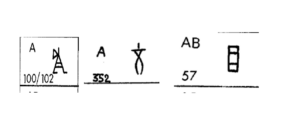
Figure 10. The syllabic sequence 100-*352-JA (adapted Salgarella 2020, drawings by author).
§42.2. It is thus clear that a formal classification of LA signs is more productive than a functional one. As seen, from a formal perspective, LA signs are subdivided into simple and composite signs. A good number of simple signs were carried onto LB and are therefore called “AB signs”. Composite signs, instead, are peculiar to LA: the method of ligaturing signs was continued to some extent in LB, but in LB we witness a wholesale change in the so-called logographic repertory, and there are very few LA composite signs that also appear in LB. My doctoral research (Salgarella 2020) has shown that LA composite signs can be arranged in what I call configurational categories, which are spatial disposition patterns of signs in relation to one another. There are: a) juxtaposed sign configurations (Figures 11a-b), where signs (either of the same or of different sizes) are simply juxtaposed to one another; and b) fused sign configurations (Figures 12), where signs are strongly interwoven and share at least one graphic trait.
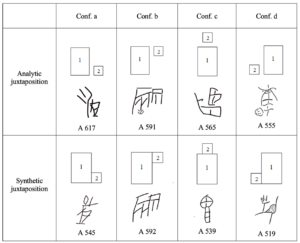
Figure 11a. Juxtaposed signs configurations – Different size signs (adapted Salgarella 2020, drawings by author).
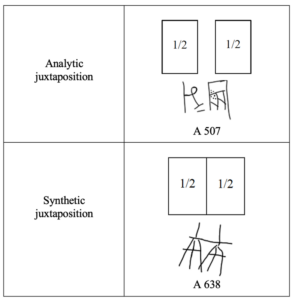
Figure 11b. Juxtaposed signs configurations – Same size signs (adapted Salgarella 2020, drawings by author).

Figure 12. Fused signs configurations (adapted from Salgarella 2020, drawings by author).
§43. As to the functional behavior of simple and composite signs, simple signs show a functional overlap (by way of example, AB 164a functions as a logogram on KH Wc 2042—2044, but as a syllabogram in the sequence RA-164a-TI on HT 17.1, 19.1); composite signs, instead, mostly behave as logograms. However, in some cases composite signs can be classified as monograms, allowing a phonetic reading. One such example is LA sign A 559, representing the composite sign MA+RU, which is understood to be the monogram for “wool” in the Minoan language).[48]
§44. It is also worth looking closely at the geographical distribution of LA simple and composite signs. Some one hundred simple signs are attested at all sites that yielded LA evidence and most of them are shared with LB (Figures 13a-c). However, a good number of LA simple signs happen to be site-specific: in Figures 13a-c these are highlighted in different colors (purple = Haghia Triada, light blue = Phaistos, dark blue = Zakros, green = Khania, red = Tylissos, orange = Mallia).
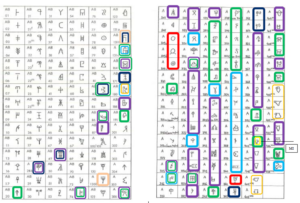
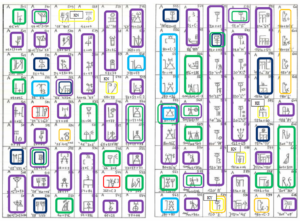
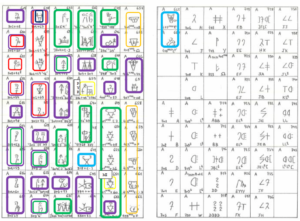
Figures 13a-c: Geographical distribution of Linear A signs (after Salgarella 2020).
§45. Interestingly, to a closer analysis it can be noted that all composite signs happen to be site-specific. By contrast, configurations are widespread across sites. At this point, we may want to ask ourselves: what are the implications of this analysis? The fact that some simple signs are shared while others are site-specific allows for the detection of site-specific signaries, namely the LA sign repertories used at each site on a local level. As a proviso, it needs stressing that the poor evidence may slightly bias our interpretation. The pattern noticed, however, is significant nevertheless. Figure 14 shows my reconstruction of so-called LA: LA is unlikely to represent a standardized monolithic entity; rather, it seems to have been composed of a number of local varieties of “LAs”, each of which composed by a shared core of AB signs and a sub-set of site-specific signs (which in the figure I call x, y, z).
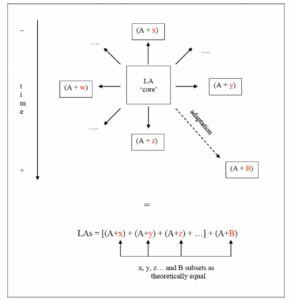
Figure 14: Linear A & Linear As (after Salgarella 2020).
§46. Thus, if we want to reconstruct the site-specific sign repertory of a given site, we simply need to combine the AB core with one of the highlighted subsets of Figure 13. Interestingly, most site-specific signs also happen to be hapaxes (that is to say, they are one-off attestations), and this is also true for composite signs. However, configurations happen to show a cross-site distribution: this scenario would suggest that there was a shared structural knowledge of how to combine simple signs together in order to get meaningful composite sign combinations, and at the same time it could be indicative of a shared practice of encoding information in a semasiographic fashion. The fact that the actual combinations of composite signs are site-specific may reflect local interests or commodities. This analysis has therefore pinpointed appreciable variability in the LA structure across sites, although there is some degree of standardization (namely, the shared AB core of signs, and the widespread use of configurations). This scenario would suggest that variation is more marked than usually thought.
Palaeographic analysis
§47. Moving now onto the next area of investigation: what is the situation like in terms of palaeography? High variability is noticeable also in this case, but it is displayed on a regional level – and not local (as before). More than one variant of a sign is attested at a given site, but the same variants are attested across sites (Figure 15), therefore showing a cross-site distribution: this pattern suggests high intra-site variation as opposed to low inter-site variability.
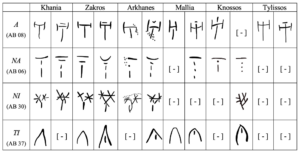
Figure 15: Sign variant distribution (after Salgarella 2020, drawings by author).
§48. Moreover, a good number of these shared variants were transmitted onto LB. In some cases, however, LA palaeography does show differences: not so much on a local level, as it does on a regional level. The palaeography of LA varieties attested at sites located on the north and east coast of Crete (these are Khania, Knossos, Mallia, Tylissos, Arkhanes, Zakros) differs to an extent from the palaeography of central/south sites, Haghia Triada and Phaistos. These latter tend to prefer one variant of a sign, as exemplified in Figure 16.
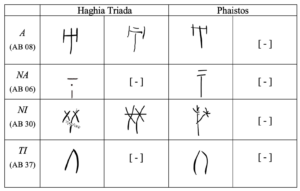
Figure 16: Sign variants at Haghia Triada and Phaistos (after Salgarella 2020, drawings by author).
§49. In addition, some variants are only used at these sites and not elsewhere, and were not transmitted onto LB (for examples and further discussion see Salgarella 2019). In conclusion, this palaeographic analysis has demonstrated the existence of regional paleographic variation, which is most marked between north/east coastal sites and the central/south area. The fact that most LA sign variants transmitted onto LB are attested at north-east coastal sites and that a number of variants from Haghia Triada and Phaistos were not transmitted onto LB suggests that LB developed under the graphic influences of writing practices in use on north/east Crete (esp. coastal sites).
Part 1: Conclusions
§50. The combined results of the structural and palaeographic analyses suggest that LA is unlikely to be a monolithic entity. I would argue that under the umbrella term “LA” are hidden a number of LA varieties. From a structural standpoint, variation is witnessed on a local level: the fact that we can detect site-specific signaries may be indicative of dialectal or linguistic variation across sites on Crete – which opens up the question of whether Minoan represents one or many languages or dialects. We may entertain the possibility that each site developed its own sign repertory to better account for specific linguistic features. From a palaeographic standpoint: variation is witnessed on a regional level and a distinction can be made between the palaeography of north-east coastal sites and that of sites located in central-south Crete. If Minoan represents more than one language, then we may wonder whether overall similar palaeographical traits might have been retained for the script to be at least mutually readable (and possibly understandable) across sites. Overall, both analyses have shown a tension between “standardization” on the one side and local and regional practices on the other.
Part 2: Digital Configurations
§51. The second part of this paper is a presentation of the database of LA inscriptions I have been co-developing with Dr Simon Castellan (INRIA, France) for a palaeographic and statistical analysis of LA in order to take the study of LA a step further.
SigLa — The Signs of Linear A
§52. The SigLA database is available open access at https://sigla.phis.me. From the homepage one can do a number of searches, that can be either general (for instance, to browse the corpus to view all the documents included) or more specific (to look for a specific sign or sign sequence or a document type within the database). Let us now look up a tablet, for instance HT 13 (https://sigla.phis.me/document/HT%2013/). On the page of each document, metadata are displayed alongside the drawing of the document based on the edited corpus. To circumvent the copyright issues surrounding the original drawings I decided to make my own drawings, as faithful to the originals as possible. Each sign is colored according to the alleged function it performs on the document (based on color code): this can be a syllabogram (in blue highlight), a logogram/ideogram (in green), or a numerical sign (in orange). Each document can be displayed either in sign view, showing each individual sign in isolation, or in word view, grouping together the signs that are part of a single word. In both cases, by clicking on a sign or word one can view all the other occurrences across the corpus: for example when clicking on AB10/u (second sign on the tablet: attestation #2), we are redirected to the comparative sign chart showing all its attestations in the database. If we now move to word view, by clicking on a word, for example ku-ro (attested on the last line of the tablet: sequence #8), likewise we can see all the instances where it occurs in context. Going back to HT 13, we can see that this tablet shows only simple signs, the complete list of which is also available in the database under “Sign List” in the Home page. SigLA sign list displays both simple signs and composite signs: the signs listed are not shown in an abstract standardized shape as in GORILA’s sign list but they represent actual attestations. With respect to composite signs, composition arrangements are also specified at the bottom of each sign: this way, composite signs are broken down into constitutive components for easier understanding of their structure. In this respect, SigLA also allows users to perform a complex search to look for all attestations of a given sign in composition. By way of example, let us take A 302: we will have to perform a “Sign” search, type “A302” in the attestations look-up bar and tick off the box “Check for attestation in composition”. Once this is done, by clicking on the “Search the corpus” bar, all results will be displayed. SigLA also allows users to study some epigraphic features, for example the presence of “erasures”, which are contexts where a scribe erased a previously written sign and wrote another (usually different) one on top. This feature is relative to the inscription making process and can also be searched in the Database by performing a “Sign” search and adding the property “[sign that] is an erasure” (which can be selected from the drop-down bar). To see all erasures in context, the box “Display document containing the occurrence” needs to be ticked off as well. At this point, I would like to present a few examples of current applications of SigLA in works using either traditional or computational approaches.
(a) Comparative palaeography
§53. SigLA allows detailed palaeographical comparison of signs and signs shapes. The original dataset forming the core of SigLA was collected in print form for my doctoral dissertation, now out as a monograph (Salgarella 2020). Another forthcoming paper of mine, co-authored with my colleague Anna Judson also uses SigLA to compare LA sign variants to LB ones to study the transmission of the Linear writing tradition from Crete to Mainland Greece and to test validity of using palaeography for dating purposes.
(b) Materiality of script
§54. SigLA also allows users to study documents and script in their materiality (size comparison, density of information on tablet surface, presence of erasures, number of palimpsests, use of dot/word-divider, ect.). Another paper of mine (Salgarella forthcoming(b)) uses the SigLA dataset to evaluate the influence of materiality on the typological structure of Linear A.
(c) Computational methods
§55. Finally, in collaboration with colleagues in the field of computer science the SigLA dataset has been subject to Machine Learning analysis with the overarching aim of detecting scribal hands.
§56. To conclude, I would also like to pinpoint some of the future pathways of research SigLA may allow. First, it may allow users to refine the LA sign repertory. The actual number of LA signs is still unclear, as a number of signs in the printed corpus are listed as “unclassified” (or have been overlooked). Moreover, in GORILA (Vol. V) every occurrence of a composite sign that had been identified as such on the extant LA evidence was classified as an independent sign in the standardized sign list (these are nos. A 501 to A 664), without specifying that most composite signs are one-off attestations (i.e. they occur only once within the whole corpus). In other words, every contextual attestation of a composite sign was taken as a sign itself and added to the standardized list of LA signs. Clearly the traditional list needs tidying up and SigLA may prove useful in this endeavor. Second, SigLA will allow us to get insights into scribal activity by studying the variation in sign shapes within and across sites, which can lead to the identification of “scribal hands” and their administrative connections, as well as scribal training and the transmission of writing “traditions”. To some extent, SigLA can also allow a study of the documents in their physical characteristics, by looking at epigraphic features (like erasures, use of word-divider, presence of ruling lines, density of writing on tablet surface) and pinacological features (e.g. size comparison, presence of cuttings and inscribed backs). Needless to say, users can customize their own dataset based on their own research interests, for instance to carry out comparative research (within a site and across sites) or to do a sign/word frequency analysis. It is therefore hoped that this new digital tool will enhance our understanding and appreciation of the Linear A script.
Discussion following Salgarella’s presentation
§57.1. Judith Weingarten observed Salgarella’s division between north and south writing styles and asked how sites with one or two tablets, such as Myrtos-Pyrgos and Palaikastro, fit in this hypothesis.
§57.2. Ester Salgarella explained that the only tablets considered relevant for her document research were from the main sites. The smaller sites were not included for two reasons, (i) they do not have enough sign variation, and (ii) the poor evidence surrounding them—Salgarella continued.
§58.1. Tom Palaima started the debate by highlighting Salgarella’s ability to honestly go through doubts that she has not fully clarified yet and referred to self-doubt as a defining characteristic of a scholar.
§58.2. Salgarella echoed Anastasiadou’s comment from the first session that no pattern comes without breakings and, in addition, Salgarella highlighted once again the unavoidable level of speculation that is involved in this type of research.
§59.1.Maria Anastasiadou focused on some technical aspects about drawings and asked (i) how they were made, whether digitally or on paper; (ii) whether Salgarella included her own interpretations or stuck with GORILA in their making of drawings; and (iii) how long it took.
§59.2. Salgarella first explained that the SigLA project started shortly before the Covid outbreak and the drawings were a time consuming activity—a long tablet could take a good hour, for example. All drawings were done digitally, i.e. on a digital tablet through the software program Krita, Salgarella highlighted. Also, Salgarella stressed that the corpus sticks to GORILA though she occasionally provided some different interpretations—something that she hopes to share on the website in the near future. However, in contexts where the tablets are unreadable to her perception, Salgarella has either left the particular point without transcription or replaced it with a dot or a question mark.
§60.1. Brent Vine drew attention to the fact that Salgarella’s work enables us to see a picture of an early writing system that is realistic. Regional variations in systems like this are to be expected, Vine continued. Also, he brought up the alphabetic system in early Italy for typological comparison. Vine remarked that in one of those systems (South Picene) the use of the dot instead of the line was also used (something that Salgarella described for the south and central areas in Minoan Crete) and highlighted that this was not understood until recently. (For details, see Marinetti 1985.)
§60.2. Salgarella expressed interest to look further into this interchange ability on a theoretical level.
§61.1. Palaima highlighted the feature of the horizontal line that indicates ten. He also added that the horizontal lines to be found inside the sign for qe would get little curls in the ends that eventually turned into dots. Palaima considered there to be compelling reasons, such as scribing fatigue, for the dots to be used instead. However, as there are so few Linear A tablets in comparison to Linear B, it is recognized that much is yet to be known—Palaima concluded.
§61.2. Salgarella agreed and pointed out that the line for ten sometimes can become a dot.
§62.1. Weingarten drew attention to the fact that there are also Linear A documents not written on tablets and others not even on clay and expressed excitement for the day when these can be examined together with the new information coming from her study.
§62.2. Salgarella seconded the excitement and lastly remarked that the next step in the SigLA website would be to include these documents as well. All the tables published in GORILA are at SigLA but only the nodules with the most significant palaeographical variants were selected to have the website getting started.
§63.1. Gregory Nagy brought the discussion to the possible palaeographic variants of the AB sign SU, an analysis of which has to be found in Nagy’s piece: Minoan and Mycenaean fig trees: some retrospective and prospective comments. Nagy hypothesized that the sequence on the roundels Cr IV 2a and Cr IV 3a is not to be read as SU-NI-KA but, rather, as SU-KA and NI. Two considerations are at the basis of Nagy’s hypothesis. First, we know via Athenaeus that the alphabetic Greek sukon “fig” has a Cretan variant nikuleon. Second, NI is the acrophonic abbreviation for “fig” in Linear B. In light of this, Nagy proposed that both roundels bear evidence of the term for “fig” (suka as plural of sukon) and, also, the acrophonic abbreviation NI. Thus far, a challenge to his hypothesis was the first sign on Cr IV 2a, usually read as TA.
§63.2. Salgarella seconded Nagy’s hypothesis that the first sign on Cr IV 2a might be read as SU on the basis of some palaeographic comparanda (to be found here) that show two relevant elements: (i) a small vertical trait to the right of the baseline, which is what resembles TA; and (ii) a “round/rounded” head, which is how the first sign on Cr IV 2a is rendered in the drawing by Brice (Brice 1961). However, Salgarella was skeptical about the role and the position of NI in Nagy’s hypothesis. She observed that an acrophonic sign between two syllabic signs is quite unusual and unexpected. On the other hand, Salgarella added that we still lack an exhaustive understanding of what can be considered standard in Linear A and that roundels usually display writing features that do not appear on tablets (here some examples, especially GO Wc 1a, HT Wc 3010, 3017a; MAWc<5a>).
§63.3. Palaima considered su NI ka an ingenious reading. With the underlying assumption of accuracy in the GORILA and SigLA drawings, Palaima proposed a tachygraphic sign simplification: with the first sign (whether ta or su) on Wc 3004 and Wc 3005, with NI on Wc 3004 and with ka on Wc 3005. In such writing context, Palaima assumed that if NI has an ideographic/logographic value, the specification with su-ka would make sense if there were another ”variety” of NI to differentiate from. This reinforces Neumann’s hypothesis on ki-ki-na (Neumann 1960) as well as Nagy’s previous comment, Palaima added. Further, Palaima commented on the irony that the reading su-ka (a loan word in Linear B) should bring up whether Linear A is Greek, as it could equally be a loan word in Linear A as well. Identifying the “language” represented by an ancient script does not exclude the loan-word element of any language, he emphasized, and pointed to the Minoan longstanding contact with the Near and Middle East and Egypt and Anatolia. Rather, it would be remarkable if languages or dialects spoken in Minoan Crete did not have a large repertory of culturally significant loan words, Palaima concluded.
§64. Salgarella’s bibliography
Brice, W. C., ed. 1961. Inscriptions in the Minoan Linear Script of Class A. Oxford.
GORILA = Godart, L., and J.-P. Olivier. 1976-1985. Recueil des inscriptions en linéaire A. Vols. I-V. Paris.
KT6 = Melena, J. L., and R. J. Firth. 2019. The Knossos Tablets. Sixth Edition. Philadelphia.
Marinetti, A. 1985. Le iscrizioni sudpicene. Florence.
Neumann, G. 1960. “Minoisch ki-ki-na ‘die Sykomorenfeige’.” Glotta 38:181—186.
Schoep, I. 2002. The Administration of Neopalatial Crete. A Critical Assessment of the Linear A Tablets and their Role in the Administrative Process. Salamanca.
SigLA = Salgarella, E., and S. Castellan. 2020. The Signs of Linear A: A Paleographical Database (https://sigla.phis.me/)
Salgarella, E. 2019 “Drawing lines: the palaeography of Linear A and Linear B.” Kadmos 58:61—92.
Salgarella, E. 2020. Aegean Linear Script(s): Rethinking the Relationship Between Linear A and Linear B. Cambridge.
Salgarella, E. forthcoming(a). “Mix & Match: a combinatory (re-)classification of Linear A signs.”
Salgarella, E. forthcoming(b). “Glocal Linear A: assessing regional and local variation in the Linear A writing and administrative practice.”
Salgarella, E., and S. Castellan. 2021. “SigLA: The Signs of Linear A. A palaeographical database.” In Grapholinguistics in the 21st Century 2020. Proceedings, ed. Y. Haralambous, 945—962. Brest.
[1] I wish to thank the organisers of the MASt Seminar, Rachele Pierini and Tom Palaima, for the invitation to present my research here. I am also thankful to the CMS Heidelberg and the Archaeological Museum of Heraklion for providing me the permission to reproduce images of their courtesy in this paper. Finally, I am grateful to Evangelia Tigka for proofreading my English.
[2] N. Platon 1974:69.
[3] Palace at the end of LM IA: L. Platon 1999a:678; 1999b:43—49; 2000:145; 2004:387—90; 2009:38—39.
[4] Hogarth 1900/1901:123; N. Platon 1974:228; 1985, 40—41; Chryssoulaki 2005:83—86; Reid 2007:138, 156—162.
[5] L. Platon 2009:54.
[6] Author’s data: February 28, 2022.
[7] Hogarth 1900/1901:130—34; 1902.
[8] Architecturally ordinary building: L. Platon 2000:66. A different opinion: Chrysoulaki in Wiener 1999:423.
[9] Hogarth 1902.
[10] N. Platon 1985.
[11] N. Platon and Brice 1975:27; N. Platon 1985:145–47, 151, 159; Hallager 1996:76.
[12] Ν. Platon and Brice 1975:30.
[13] N. Platon 1974:134–135; N. Platon and Brice 1975:27, 29–30.
[14] Furumark:1950, 154; Niemeier 1980:13, 19–20; Hallager 1996 (I):74; Driessen and Macdonald 1997:240; Müller 1997:291–292; L. Platon 2004:387–389; 2011:596–599.
[15] Types and functions of Neopalatial nodules: Hallager 1996 (I); Krzyszkowska 2005:154–192; Karnava 2018:102–115.
[16] Material: Pini 1983:561–562, with n. 16; Weingarten 1983:40; Hallager 1996 (I):137; Krzyszkowska 2005:156; Karnava 2018:102.
[17] Pini 1983:562; Weingarten 1983a:40–43; Hallager 1996 (I), 142–143; Müller in CMS II,6:p. 349; II,8:p. 38–39; Karnava 2018:227.
[18] Wiener 1999:419–420; Weingarten 1983:45–47; Reid 2007:135–136. Against this hypothesis: Montecchi 2019:262–270.
[19] For these seals, see Anastasiadou 2016:77—78; 2022:141—143.
[20] For these rings: Betts 1967; Hallager 1996 (I):207—209; CMS II,6:XXV—XXIX; Krzyszkowska 2005:189—192; Weingarten 2010; Becker 2018:228—237; Karnava 2018:186—194.
[21] For these seals: Boardman 1970:42; Weingarten 1983:49–126; Anastasiadou 2016:78–84; 2022:143–144.
[22] Lentoids: Pini 1983:566; Weingarten 1983:10, 59; CMS II,7 passim; Krzyszkowska 2005:151.
[23] Other contributions on these images: Anastasiadou 2016, with more bibliography in p. 78, n. 8.
[24] Anastasiadou 2016:78–84; 2020:9. CMS II,7 nos. 126, 127 which have been seen as the standard hybrid of the bird-lady (= lower body of human female + upper part/head of a bird) in the aforementioned publications probably display the heads of a griffin and a Minoan Dragon respectively.
[25] For these seal faces: also Pini 1983:562–572.
[26] A hundred and sixteen one-seal and 82 two-seal nodules.
[27] A hundred and forty in series and 71 individual specimens.
[28] The second comprises 13 nodules stamped by CMS II,7 nos. 103 + 237.
[29] Only eight seal faces stamped in six two-seal nodules are encountered in stable combinations.
[30] A hundred and sixty-seven examples are two- and 116 are three-seal nodules.
[31] Two hundred and twenty-three nodules belong to series that include more than 10 examples each.
[32] A similar suggestion in Weingarten 1983:16, 102–103.
[33] Knossian provenance: Betts 1967:26–27; Weingarten 1990:110–112; 1991:308–310; Hallager 1996 (I):207–209. Discussion of their place of manufacture: Krzyszkowska 2005:189–192; Tsangaraki 2006:297–299.
[34] E.g. the nodules stamped by CMS II,6 nos. 1–148, 160, 168, 255–266, 271–272; II,8 no. 193; V Suppl. 1A no. 183; Karnava 2018: 258–326, nos. N1–N69.
[35] E.g. HMs 1677 with impression of CMS no. 31 (individual) and HMs 607, 609, 536–537, 604–606, 608 with impressions of CMS II,6 nos. 22/23 (series) from Agia Triada.
[36] For variable combinations on these sites: Karnava 2018:203–213.
[37] CMS II,6 nos. 104–105, 268–269 (Agia Triada and Sklavokambos); CMS II,8 no.116; 189 (Knossos). Perhaps also CMS II,6 no. 106 (Agia Triada).
[38] Weingarten 1983:123–124; Krzyszkowska 2005:152.
[39] HMs 180 with impressions of CMS II,8 nos. 41 + 42 + 597 (Knossos).
[40] Taken into consideration is the material from Knossos, Malia, Akrotiri, Thera, Gournia, Palaikastro, Agia Triada, Sklavokambos, Tylissos, Pyrgos and Chania.
[41] E.g., variants and stable seal face combinations in Knossos: the series HMs 388/1–9, OAM 1938.1440a, b with CMS II,8 nos. 115 + 154/155/156.
[42] Hallager 1996 (I):209–213.
[43] Eleni Nodarou (pers. comm.). See also, Karnava 2018:195.
[44] Aegean signet rings: e.g., Becker 2018.
[45] Elite imagery in Neopalatial glyptic: Tsangaraki 2006:281–312. Bull imagery: e.g., Betts 1967:26–27; Hallager and Hallager 1995.
[46] An up-to-date list of LB signs is available in KT6.
[47] Only later on a functional approach was applied to LA signs by Schoep (2002), where signs are classified as: syllabograms, logograms, monosyllabic signs, isolated signs, compound signs, klasmatograms and numerals (Schoep 2002:37—39).
[48] As A 559 was retained in Linear B as the logogram for wool (LANA), it is likely to represent the monogram of the Minoan word for ‘wool’, borrowed into Greek as μαλλός ‘wool/fleece’. In fact, Hesychius preserves the gloss μάλλυκες explained as the word for τρίχες on Crete, and uses the term μαλλός for ‘fleece’ (Works and Days 234).